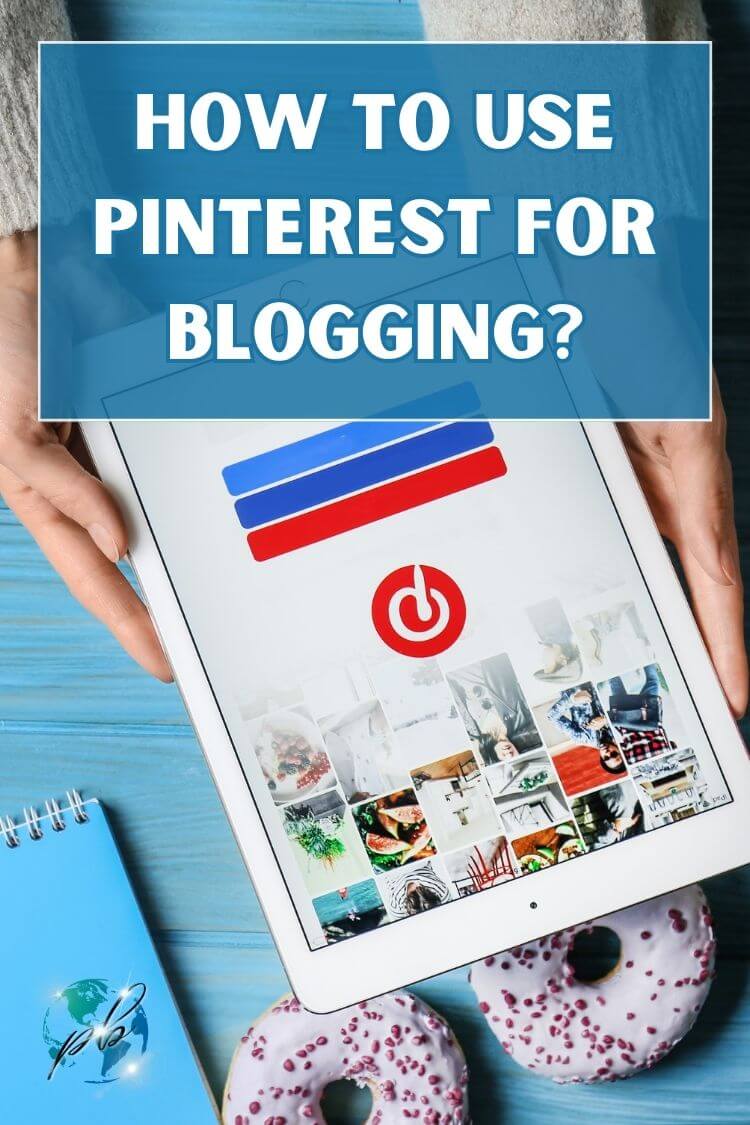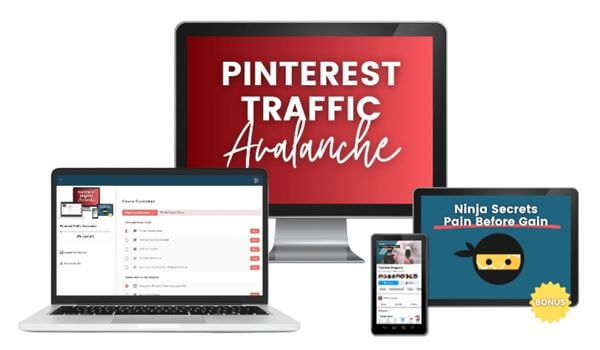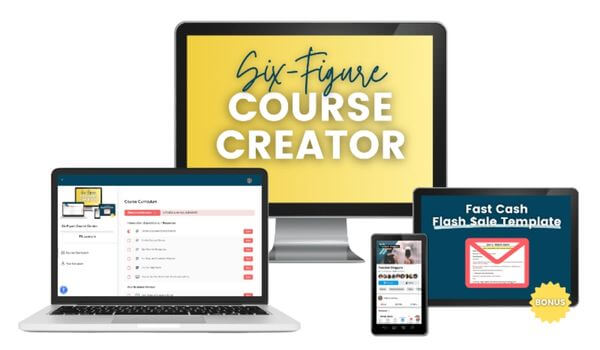How to use Pinterest for blogging?
I’ve used Pinterest since the early and humble beginnings of my blogging journey. I had to learn a lot, and I’ve learned from the very best course that I share here – “The Art of Pinterest”. In order to learn how to use Pinterest for blogging, I would happily invite you to try this course.
I have no hesitations to say that it is going to deliver on its promise.
It did for me.
In the meantime, before I move on, here’s a quick answer to how to use Pinterest for blogging:
Use Pinterest to increase blog traffic by creating engaging pins linking to your posts, using relevant keywords in descriptions, and joining group boards. Consider paid Pinterest ads for wider reach. Regularly engage with others for networking.
- What is Pinterest?
- Is Pinterest social media?
- How to post on Pinterest?
- Pinterest pins ideas.
- Pinterest board ideas.
- How to get followers on Pinterest?
- How to use Pinterest for blogging?
- How to use Tailwind for Pinterest?
- Pinterest & affiliate marketing.
- Is there a Pinterest Chrome extension?
- Recap on how to use Pinterest for blogging.
- Conclusion on how to use Pinterest for blogging.
What is Pinterest?
In order to know how to use Pinterest for blogging, you need to know what this platform is.
Pinterest is a “kind of” social networking platform that allows users to save, to share ideas, inspiration, and information through visual bookmarks known as “pins.” Pinterest was launched in 2010 and has since grown to become one of the most popular social media sites in the world.
With millions of active users, Pinterest provides a great opportunity for bloggers to drive traffic to their websites.
Some people may wonder if Pinterest is really considered a social media site. The answer is yes, but it’s more than that.
Whereas other social media platforms like Facebook or Twitter focus on sharing personal updates or opinions, Pinterest centers on showcasing visual content that inspires and informs its users. Posting on Pinterest is easy.
First, create an account with your email address or login using your Google or Facebook account. Once you’re signed in, you can start creating boards based on specific themes such as recipes, travel destinations, or DIY projects.
You can then begin “pinning” images and videos from other sources onto these boards. Pinterest provides endless inspiration for bloggers looking for new ideas for their content.
From pictures of cute animals to inspirational quotes, there’s something for everyone on the site. And if you ever need a good laugh, just search for “Pinterest fails” – trust me!
If you’re stuck on what kind of boards to create yourself, consider checking out what others are doing by browsing through popular categories like home decor or health & fitness. The next step after creating boards is getting followers on Pinterest so that more people see your pins.
One way to gain followers is by engaging with other users’ pins by liking them or commenting on them. Another great strategy is using Tailwind – a tool designed specifically for scheduling pins ahead of time so that they post at optimal times throughout the day when your audience is most likely active online.
Overall, there are many benefits to using Pinterest as a blogger – from discovering new trends and ideas to building up affiliate marketing revenue.
So why not give it a try and see what Pinterest can do for you and your blog?
Is Pinterest social media?
how to use Pinterest for blogging is knowing that Pinterest is NOT a social media platform. This is why I said earlier “kind of”. Pinterest is often classified as social media, but it’s actually more of a visual search engine.
While social media platforms like Facebook and Twitter focus on connecting people and promoting engagement, Pinterest is all about discovery.
Users browse pins and boards related to their interests and discover new ideas, products, and trends they might not have found otherwise. That being said, Pinterest does share some characteristics with social media.
Users can follow other users’ profiles, like and comment on their pins or boards. They can also interact by repinning content to their own boards or sending pins through direct messages.
However, what sets Pinterest apart from traditional social media platforms is the emphasis on visual content. Pinterest relies heavily on high-quality images and videos to capture users’ attention and drive engagement.
Whether you’re looking for inspiration for your next outfit or home decor project, you’re likely to find a wealth of visually appealing content on the platform. In fact, one of the reasons why Pinterest has gained such a massive following in recent years is that it offers something for everyone.
From recipes to travel destinations to DIY projects to fashion tips – there’s no shortage of content on Pinterest for anyone with an interest in anything at all!
And with features like Tailwind available for bloggers who want to automate their posting schedule across multiple boards over time – there really is no limit when it comes to utilizing the platform’s vast resources for driving traffic toward your blog!
How to post on Pinterest?
Posting on Pinterest may seem straightforward, but there are a few things to keep in mind to ensure that your pins are successful. First and foremost, it’s important to choose high-quality images for your pins. Pinterest is a visual platform, and users are more likely to engage with pins that look aesthetically pleasing.
Make sure that your images are clear, in focus, and well-lit. It’s also helpful to include text overlays on your images that indicate what the pin is about.
When you’re ready to post your pin, you’ll need to create a new pin within the Pinterest platform. To do this, click on the plus sign in the upper right-hand corner of the screen and select “Create Pin.” From there, you’ll be prompted to upload an image or choose an image from a website.
Once you’ve selected an image for your pin, you’ll need to add a description. This is where you can provide more information about what the pin is about.
It’s important to include relevant keywords in your description so that your pin will show up in search results when users look for those topics. You can also add hashtags if they’re relevant.
In addition to creating individual pins, it’s important to organize them into boards on your profile. This will make it easier for users to navigate through your content and find what they’re looking for.
When creating boards, be sure to choose descriptive titles and consider organizing them by topic or theme.
Overall, posting on Pinterest requires attention not only towards creating visually appealing content but also towards optimizing descriptions with relevant keywords so as not only to attract eyeballs but clicks as well!
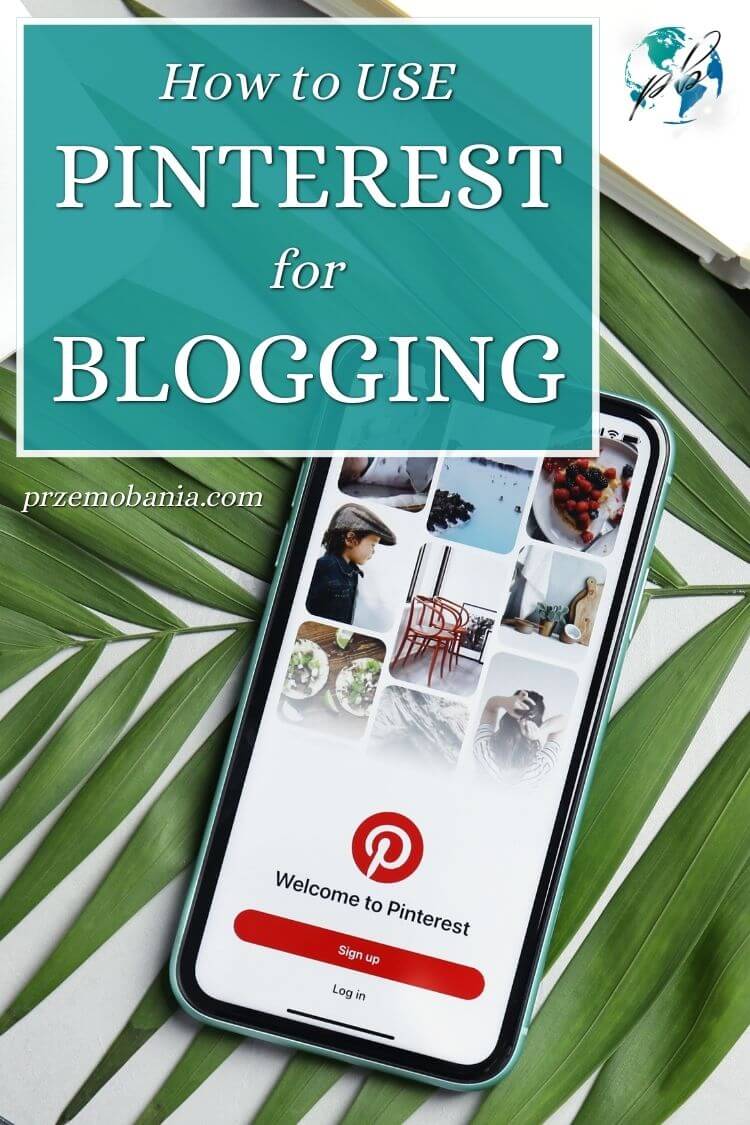
Pinterest pins ideas.
Now that you have a pretty good idea of what Pinterest is and how it can be used for blogging, let’s talk about some ideas for the kind of pins you can create. The possibilities are endless, but here are a few ideas to get you started.
First, you might consider using Pinterest pictures as a way to showcase your blog content. You can create custom graphics that highlight your latest blog post or feature eye-catching images related to the topic of your post.
These visuals can draw readers in and encourage them to click through to your blog. Another option is to use Pinterest affiliate marketing as part of your pinning strategy.
By including affiliate links in your pins, you can earn a commission on any sales generated from people who click through and make a purchase. This is a great way to monetize your blog content and increase your income streams.
To make sure that people see your pins, it’s important to focus on how to get Pinterest followers. One way to do this is by staying up-to-date with Pinterest trends and creating content that taps into what people are looking for.
You might also consider joining Tailwind tribes or groups related to blogging or other topics that align with your niche. Of course, not all pins are successful.
Sometimes you may try something new and experience Pinterest failure where the pin does not perform as well as expected. However, don’t let this discourage you – keep experimenting with different strategies until you find what works best for you!
Remember, there really is Pinterest everything out there so be creative and have fun with it. You could also consider creating boards around specific themes or topics related to the content of your blog posts such as career advice or quotes from inspirational women if you run a women empowerment blog!
This will help organize all of the different ideas floating around in Pinterest into neat categories for readers looking for specific information on those topics. Now that we have covered some ideas for pin creation, in the next section, we’ll take a look at some board ideas to help you organize your content and attract followers to your profile.
Pinterest board ideas.
Pinterest is a fantastic platform for bloggers, and one of the keys to success is having great boards that attract followers. Essentially, a board on Pinterest is like a physical corkboard where you can pin images or videos that are relevant to a particular theme.
When it comes to creating boards that will resonate with people, there are countless possibilities. One great way to come up with board ideas is by considering your blog’s niche.
For example, if you run a food blog, you might create boards for recipes sorted by category (appetizers, main courses, desserts), seasonal ingredients (pumpkin spice everything!), or even specialty diets (vegan recipes, gluten-free meals).
Similarly, if you blog about fashion or beauty, you could curate boards around topics like makeup tutorials, and outfit inspiration for different occasions or seasons such as cozy winter outfits and summer beach-style ideas.
Another strategy for creating engaging Pinterest boards is by tapping into popular trends and fads.
Many people turn to Pinterest when they’re looking for inspiration or information about something specific, for instance, home decor trends such as boho chic style living room design ideas 2021, so having a board dedicated to current trends can help attract new followers.
Remember that variety is key when it comes to creating successful Pinterest boards. You want your content mix of pins on each board to be interesting and diverse enough to keep your audience engaged without becoming overwhelming.
Consider combining different formats such as videos and photographs along with quotes that reflect your brand voice especially if you have experience working in social media careers. Overall Pinterest offers endless opportunities for bloggers looking to boost their online presence!
How to get followers on Pinterest?
Getting followers on Pinterest isn’t as difficult as it may seem. The key to gaining followers on Pinterest is consistently sharing quality content that resonates with your audience.
Pinners are always looking for new and interesting content to engage with, so the more you share, the more likely they are to follow your boards. One way to gain followers on Pinterest is to create boards that are relevant and specific.
If you have a blog about healthy living, create a board about healthy recipes and another one for fitness tips. This will attract people who are interested in those topics specifically, making them more likely to follow your profile.
Another way to get followers on Pinterest is by engaging with other users. Follow other users whose boards you find interesting and comment on their pins.
This will increase your visibility on the platform, making it easier for other users to find your boards and follow you. Consider using Tailwind or similar scheduling tools to automate your pinning schedule.
Consistency is key when it comes to gaining followers on Pinterest, so make sure you’re posting regularly at optimal times when your audience is most active. With Tailwind, you can also join tribes and communities related to your niche which can help increase your reach beyond just your own following.
Overall, there are many ways to gain followers on Pinterest and increase engagement with your content.
By creating specific boards, engaging with other users, and using scheduling tools like Tailwind for consistent postings at optimal times – you’ll be well-positioned for success!
How to use Pinterest for blogging?
Pinterest can be highly effective in driving traffic to your blog. In order to use Pinterest for blogging, there are several things you need to keep in mind.
The first thing you need to do is create a business account on Pinterest. This will give you access to analytics and other features that are not available on a personal account. You should also claim your website on Pinterest by verifying it.
This will allow you to see how many people are pinning from your website and how many clicks those pins are getting. Once you have set up your account, the next step is to create boards that relate to your blog’s niche.
For example, if your blog is about food, you might have boards for “recipes”, “kitchen tools”, and “meal planning”.
Make sure the boards have catchy titles and descriptions that include relevant keywords. You should also make sure the board covers are visually appealing and eye-catching.
When creating pins for your blog posts on Pinterest, make sure they include high-quality images that accurately represent the content of the post. You can create these images using free or paid graphic design tools like Canva or Photoshop.
Include engaging headlines, keywords related to the post content, and hashtags if appropriate. Be sure to link each pin back directly to the post on your blog.
By following these steps, you can use Pinterest as a powerful tool for driving traffic to your blog. Keep track of metrics through analytics tools like Tailwind or native Pinterest analytics so you can adjust strategy as needed based on Pinterest trends and Pinterest fails (if any).
Don’t forget about Pinterest everything – different kinds of posts can work well with different kinds of products and categories – even including Pinterest careers!
Don’t forget Pinterest affiliate marketing, carefully curate links within pins and descriptions so readers feel engaged but not sold out!
How to use Tailwind for Pinterest?
Using Tailwind for Pinterest Tailwind is a powerful tool that can help you supercharge your Pinterest marketing efforts.
With Tailwind, you can schedule pins to be published at the best times for maximum engagement, join tribes to get more exposure for your content and track your analytics to see how well your pins are performing. Here are some tips on how to use Tailwind for Pinterest:
1. Schedule Your Pins. The key benefit of using Tailwind is the ability to schedule pins in advance.
This means you don’t have to be online all the time to post new content on Pinterest; instead, you can schedule pins at the best times throughout the day or week when your audience is most active. With Tailwind’s SmartSchedule feature, you can even let Tailwind choose the optimal posting times based on when your audience is most likely to engage with your content.
2. Join Tribes Tailwind. Tribes are groups of people who share similar interests and content on Pinterest.
By joining a tribe relevant to your niche or industry, you can get more exposure for your content and increase engagement with other like-minded users on Pinterest. When you add a new pin to a tribe, other members of the tribe will see it and may share it with their own followers if they find it interesting or useful.
3. Analyze Your Results. Tailwind offers detailed analytics that allow you to track how well your pins are performing on Pinterest.
You can see which pins are getting the most engagement, what times of day are best for posting new content, and which boards are driving the most traffic back to your website or blog. Armed with this information, you can adjust your strategy as needed and optimize future posts for better results.
Overall, using Tailwind for Pinterest is an effective way to improve your social media marketing efforts and get more out of this platform beyond just pinning pretty pictures online! By scheduling posts ahead of time, joining tribes, and tracking your analytics, you can take your Pinterest game to the next level and see real results for your blog or business.
Pinterest & affiliate marketing.
Affiliate marketing is a popular way for bloggers to earn money through their websites. And Pinterest is an excellent platform where bloggers can share their affiliate links and make money.
The process is simple; you create an account with any affiliate program that you prefer and then promote the products through your Pinterest account.
One of the best ways to use affiliate marketing on Pinterest is to create a board specifically for your affiliate links.
You can give it a catchy name like “My Top Picks” or something relevant to your niche, and fill it with product pins that you think your followers will love.
Be sure to include a clear description of each product, along with why you recommend it. Another great way to use Pinterest for affiliate marketing is by creating vertical pins that showcase your favorite products.
You can use high-quality images that highlight the product’s features, along with text overlay that explains why you love it and how it could benefit your followers. The key here is to make sure that your pins are visually appealing, so make sure that they stand out from all the other pins on users’ feeds.
Be creative when promoting affiliate products on Pinterest. Try creating gift guides or round-up posts featuring multiple products in one pin.
This way, users can quickly see what they’re interested in without having to navigate through numerous pages or boards. Remember always to adhere to FTC guidelines when promoting affiliate links on social media platforms like Pinterest.
Using Pinterest for affiliate marketing can be an effective way for bloggers and content creators to monetize their website traffic while providing valuable information and recommendations for their followers.
Make sure that you’re ethical in how you promote these links by being transparent about them being sponsored content or advertisements as required by law.
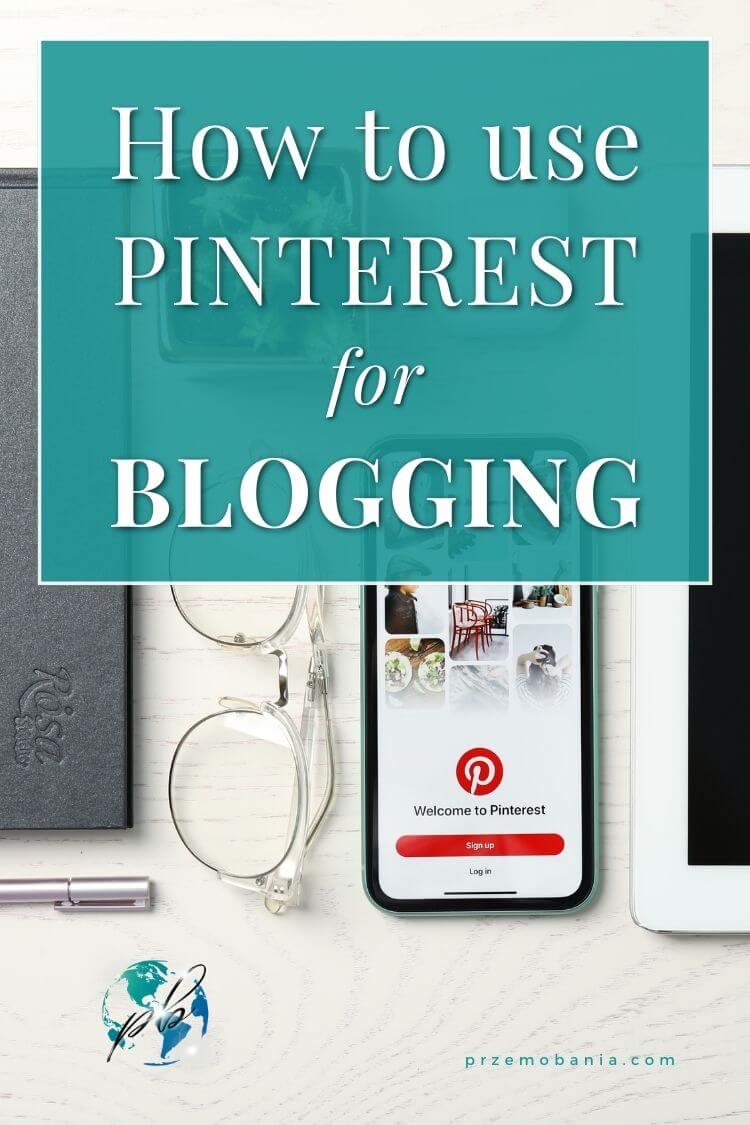
Is there a Pinterest Chrome extension?
A Pinterest Chrome extension is a tool that can make your life a lot easier when you are using Pinterest. It is a browser add-on that enables you to access Pinterest from your web browser without having to go to the official website every time.
Using the Pinterest Chrome extension, you can save pictures, blog posts or quotes directly from the internet and add them to your boards with just one click.
There are several different Pinterest Chrome extensions available, so you should look for one that fits your needs. Some extensions allow you to schedule pins in advance, while others let you see how many repins or likes a pin has received.
There are also some extensions that allow you to easily find trending topics on Pinterest, which can be very helpful if you are looking for content ideas. One of the most popular and useful Chrome extensions for Pinterest is Tailwind.
This tool allows bloggers and marketers to schedule their pins for optimal times, track analytics and measure their performance on the platform. With Tailwind’s SmartSchedule feature, your pins will be automatically scheduled at times when they are most likely to receive engagement based on past data analysis.
This means that even if you’re not actively using Pinterest at those times yourself, your content will still be seen by potential followers and clients. Having a Pinterest Chrome extension can help take your blogging game up a notch by making it easier to save and organize content on the platform.
Whether it’s finding trending topics or scheduling pins in advance with Tailwind, these tools can save both time and energy by streamlining the process of managing your account.
So if you haven’t already added a Pinterest Chrome extension to your browser arsenal yet – now is definitely the time!
Recap on how to use Pinterest for blogging.
Overall, Pinterest can be an incredibly useful tool for bloggers to drive traffic to their websites and promote their content. If used correctly, it can increase engagement, attract new followers, and even lead to potential collaborations. To recap on how to use Pinterest for blogging, here are some key takeaways…
Firstly, it’s important to create a business account on Pinterest rather than a personal one. This will allow you access to analytics and other business tools that can help you understand your audience better.
You should also optimize your profile with a clear profile picture, bio, and website link. When creating pins for your blog posts, make sure they are visually appealing and include attention-grabbing titles.
It’s also helpful to use keywords in your pin descriptions so that they show up in relevant search results. In terms of boards, consider creating themed boards related to your niche or brand.
You can also create group boards where other users can contribute pins – this is a great way to collaborate with others and reach new audiences. And don’t forget about Tailwind – this tool allows you to schedule pins in advance which can save you time and ensure consistent engagement.
Pinterest has become an essential platform for bloggers looking to promote their content.
By following these tips on how to use Pinterest for blogging effectively – including creating visually appealing pins and optimizing your profile – you’ll be well on your way towards driving traffic and increasing engagement with your audience!
Conclusion on how to use Pinterest for blogging.
Pinterest is an incredibly powerful tool for bloggers. It allows you to showcase your work, connect with other bloggers and new readers, and even drive traffic to your website.
With a little bit of effort, you can create stunning boards that will attract followers and keep them coming back for more. One thing to keep in mind when using Pinterest is that it’s not just about promoting yourself – it’s also about being a part of a larger community.
By engaging with other users’ content (liking, commenting, and re-pinning), you’ll make connections that can be incredibly valuable down the line. Plus, it’s always fun to see what other people are pinning – you might even discover some new trends or interests!
If you’re serious about using Pinterest for blogging, I highly recommend investing in Tailwind. This tool makes it easy to schedule pins in advance, join tribes (groups of like-minded pinners), and track your analytics so you can see what’s working (and what’s not).
Plus, Tailwind offers tons of resources for learning how to use Pinterest effectively – from webinars to blog posts – so you’ll never be at a loss for ideas. Overall, I believe that if used correctly, Pinterest can be an incredibly powerful tool for bloggers looking to connect with their audience and grow their online presence.
So go ahead – start creating those boards! Whether it’s Pinterest everything or just a few select topics like Pinterest careers or Pinterest quotes – the possibilities are endless!


Przemo Bania is a blogger and writer who helps people get out of their traditional jobs to start a blogging career. Przemo also runs a health blog advocating for endometriosis and fibromyalgia…
Blogging courses from A to Z!
Apart from learning how to use Pinterest for blogging, you can take your blogging skills to the next level with a selection of top-notch blogging courses created by Alex and Lauren.
Whether you’re a beginner just starting out or a seasoned pro looking to refine your skills, these courses have always something to offer.
Learn how to create killer content, build a loyal audience, and monetize your blog through a variety of strategies. With expert instructors and comprehensive curriculums, our courses are designed to give you the tools and knowledge you need to succeed in the competitive world of blogging.
Sign up today and take your blogging game to the next level!
Start from scratch
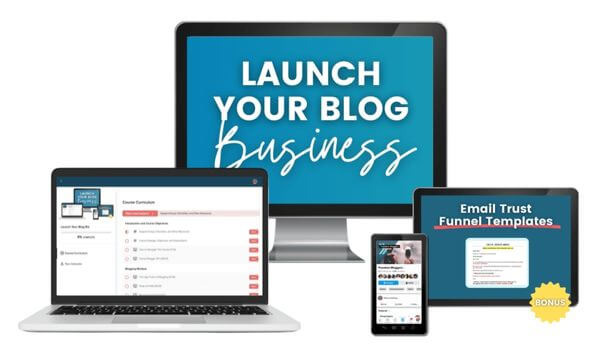
Launch Your Blogging Biz
Start your blogging business and grow it from scratch. This is ideal for beginner bloggers.
Focused on the SEO
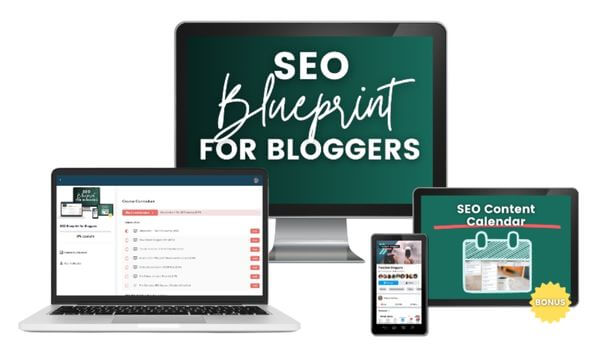
SEO Blueprint for Bloggers
Turn your blog into an SEO traffic machine. Bring organic traffic from search engines.

